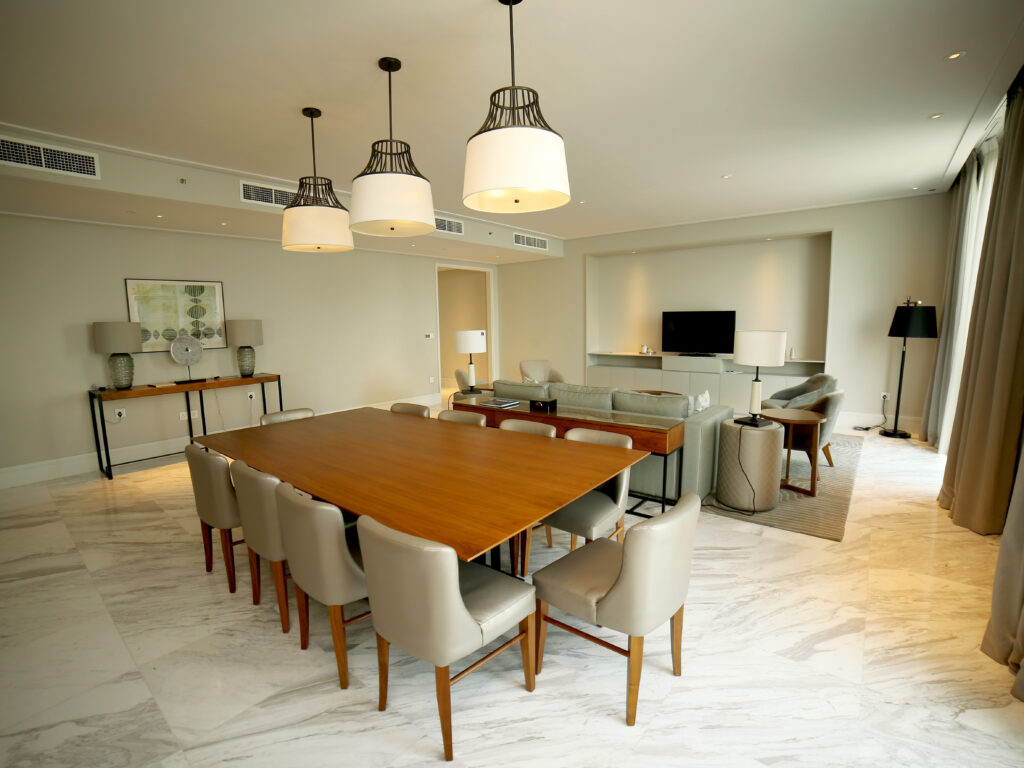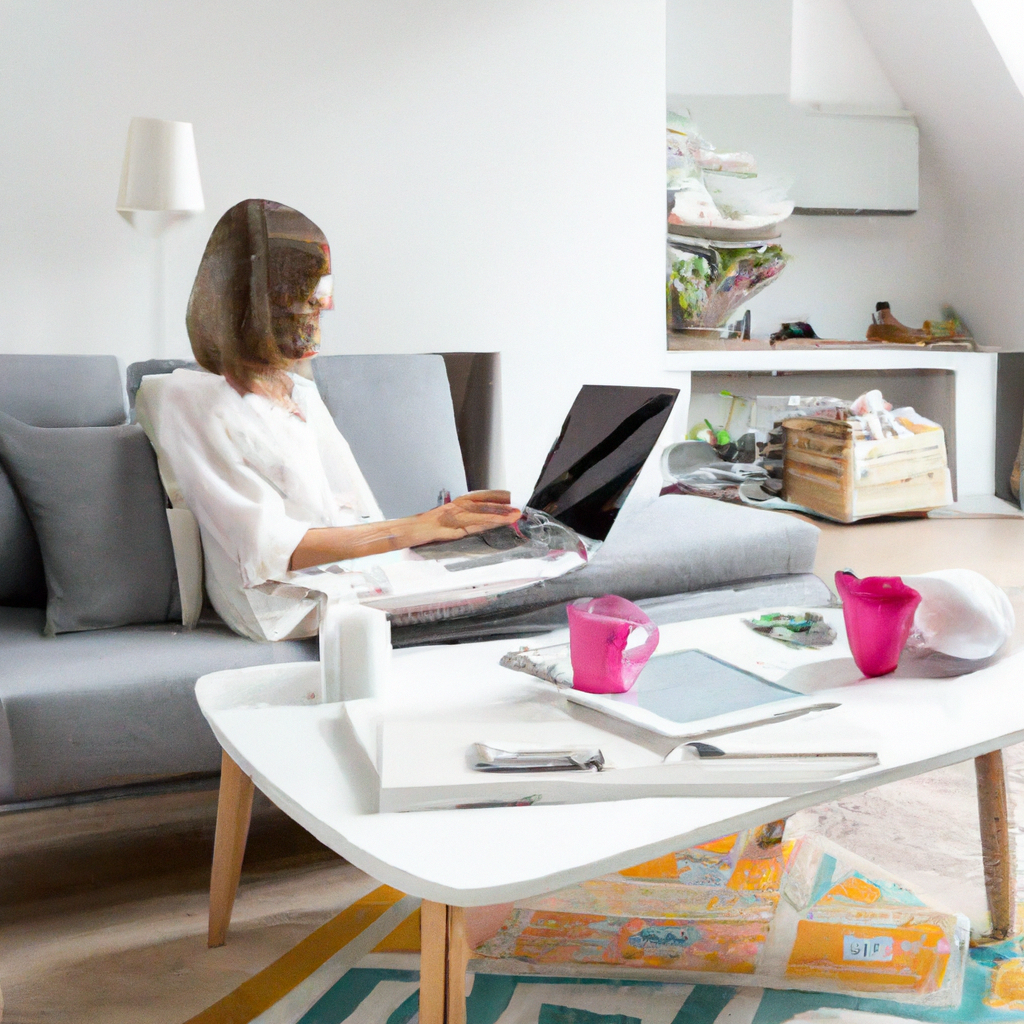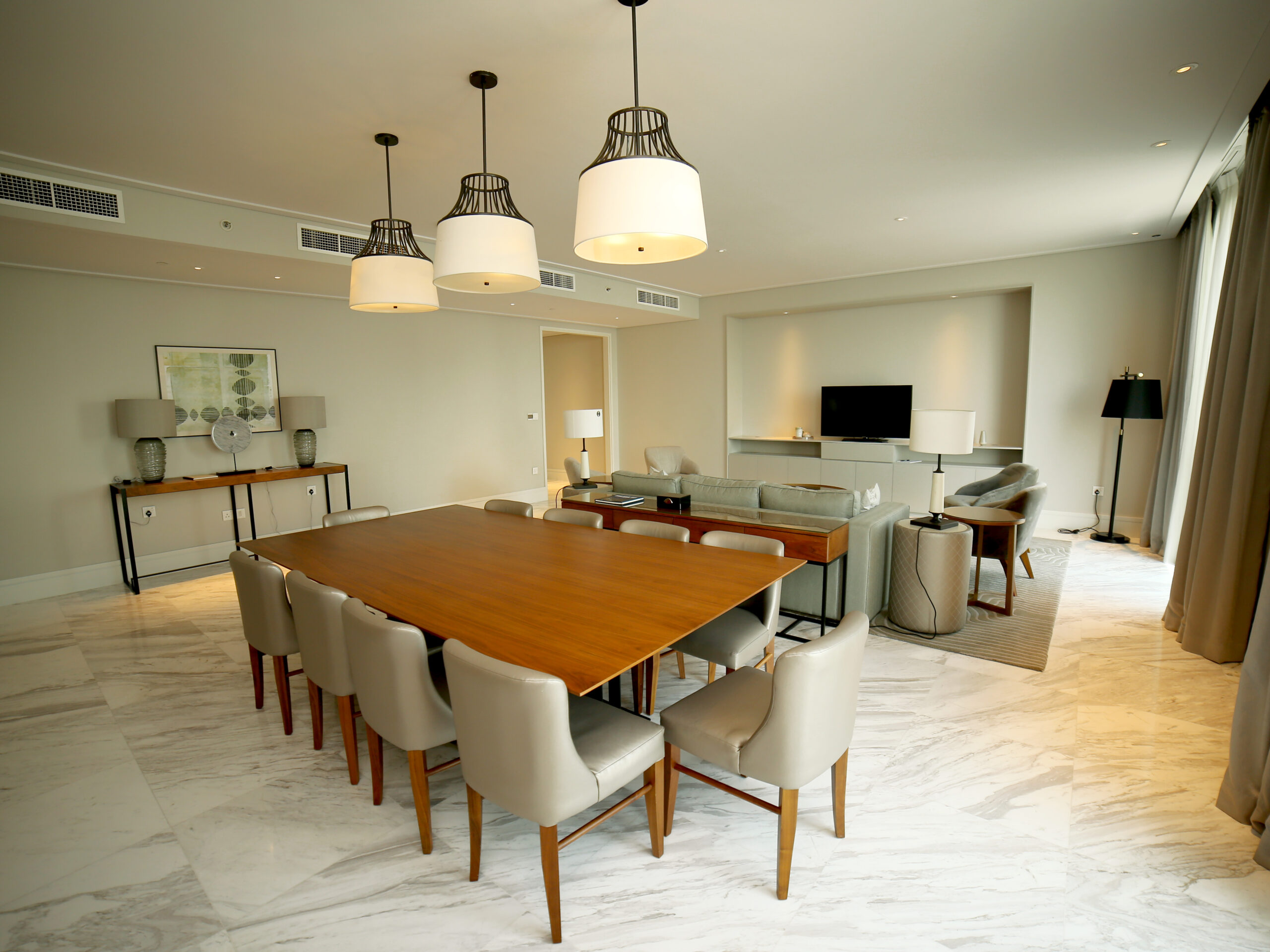Imagine coming home from a long day at work, exhausted and eager to relax. As soon as you step through the front door, the lights automatically switch on, the thermostat adjusts to the perfect temperature, and your favorite music starts playing softly in the background. This is the power of automation in your smart home. With just a few simple steps, you can transform your living space into a convenient, efficient, and truly smart sanctuary. In this article, we will guide you through 10 easy steps to set up automation in your smart home, making your life easier and more enjoyable.
Choose the Right Automation Hub
When setting up automation in your smart home, one of the first things you need to do is choose the right automation hub. A hub acts as the central control point for all your smart home devices, allowing you to connect and control them from a single app or interface.
To start, you should research different automation hubs and compare their features and capabilities. Look for hubs that are compatible with a wide range of devices and have positive reviews from other users. Consider the specific needs and requirements of your smart home setup to ensure that the hub you choose will be able to handle all your devices and automation tasks.
Compatibility with your devices is a crucial factor to consider. Make sure that the automation hub you choose supports the devices you already have or plan to have in your smart home. Some hubs may only be compatible with certain brands or types of devices, so it’s important to check the specifications before making a decision.
In addition to compatibility, it’s also important to evaluate the features and price of the automation hubs you are considering. Look for hubs that offer the features you need, such as voice control, scheduling, and integration with other smart home systems. Compare prices to ensure that the hub fits within your budget.
Once you have done your research and evaluated the different options, you can select the best automation hub for your needs. Remember to consider not only the current state of your smart home devices but also any plans for future expansion or upgrades. Choosing the right automation hub is the foundation for a seamless and efficient smart home automation setup.
Assess Your Smart Home Devices
Before you can start setting up automation in your smart home, you need to assess the devices you have and ensure that they are compatible with your chosen automation hub.
To begin, make a list of all your smart home devices. This includes devices such as smart lights, thermostats, door locks, cameras, and speakers. Take note of the specific make and model of each device to help with compatibility checks later on.
Once you have your device list, check the compatibility of each device with your chosen automation hub. Most automation hub manufacturers provide compatibility lists or databases that you can consult. Alternatively, you can reach out to customer support for assistance. This step is essential to ensure that all your devices will work seamlessly with your automation hub.
In addition to compatibility, it’s crucial to ensure that firmware and software updates for your devices are up to date. These updates often include bug fixes, security patches, and new features that can enhance the performance and functionality of your devices. Check for updates on the manufacturer’s website or within their corresponding apps, and follow the instructions to install any necessary updates.
If you find that some of your devices are not compatible with your chosen automation hub or are outdated and not receiving updates, you may need to consider replacing them. Upgrading to compatible and up-to-date devices will ensure a smoother automation experience and prevent any compatibility or performance issues in the future.

Install and Set Up Your Automation Hub
Now that you have chosen the right automation hub and assessed the compatibility of your devices, it’s time to install and set up the hub in your smart home.
Start by reviewing the manufacturer’s instructions for your specific automation hub. The instructions will provide step-by-step guidance on how to physically install and connect the hub. It’s important to follow these instructions carefully to ensure a successful setup.
Next, find a suitable location for the hub. Ideally, the hub should be placed in a central area of your home to ensure optimal coverage and connectivity for your smart devices. Avoid placing the hub too far away from your devices or in areas with excessive interference, such as near large metal objects or other electronic devices.
Connect the hub to power and your home network. Most automation hubs require a power source, such as an electrical outlet, and a connection to your Wi-Fi network. Follow the instructions provided by the manufacturer to complete these connections.
Once the hub is powered on and connected to your network, it’s time to download and install the hub’s app. The app acts as the control center for your automation hub, allowing you to manage and control your smart home devices. Visit the app store on your smartphone or tablet, search for the hub’s app, and follow the prompts to download and install it.
After you have installed the app, launch it and follow the setup process. This typically involves creating an account, connecting your hub to your app, and completing any additional setup steps as directed by the app. The setup process may vary depending on the hub you have chosen, but the app will guide you through the necessary steps.
Connect Your Smart Home Devices to the Hub
With your automation hub installed and set up, it’s time to connect your smart home devices to the hub. Each device may have its own specific instructions, so consult the manufacturer’s instructions for each device to ensure a successful connection.
Start by putting each device into pairing or connecting mode. This mode allows the device to be discovered and connected to your automation hub. The process of entering pairing mode may vary for each device, so consult the manufacturer’s instructions for the specific steps.
Once the devices are in pairing mode, use the hub’s app to initiate the device connection. In the app, there should be an option to add or connect devices. Follow the prompts provided by the app to search for and connect to your devices.
During the pairing process, the app may ask you to confirm the connection by pressing a button on the device or entering a code. Follow the instructions provided by the app and the device to complete the connection.
Repeat this process for each of your smart home devices, ensuring that each device is successfully connected to your automation hub. Take note of any devices that may not successfully connect or show compatibility issues.

Create Automation Routines
Now that your smart home devices are connected to the hub, it’s time to create automation routines. Automation routines allow you to set up specific actions or sequences of actions to occur automatically based on certain triggers or conditions.
Open the automation hub’s app on your smartphone or tablet. Look for the Automation or Routines section within the app. This section is where you can create and manage your automation routines.
Select the option to create a new routine. Give the routine a name that is descriptive and easy to remember. For example, you might name a routine “Good Morning” to automate your morning routine tasks.
Next, choose the trigger or triggers for the routine. Triggers can include things like specific times, device activations, or even external factors such as weather conditions. Select the trigger(s) that make the most sense for the routine you want to create.
Once you have chosen the trigger(s), select the action(s) to be performed when the routine is triggered. Actions can include turning on or off specific devices, adjusting settings, sending notifications, or even triggering other routines. Choose the action(s) that align with the goals of your routine.
Configure any additional settings for the routine, such as delays between actions or restrictions on when the routine can be triggered. These settings will vary depending on the capabilities of your automation hub and devices. Experiment with different settings to fine-tune your routines to your preferences.
After configuring the routine, save and activate it. The routine will now be available to run automatically based on the triggers and actions you have defined. You can create multiple routines to automate different aspects of your smart home, such as lighting, temperature control, or security.
Set Up Voice Control
Voice control adds an additional layer of convenience and hands-free operation to your smart home automation. Many automation hubs support voice control through popular voice assistants such as Alexa or Google Assistant. Here’s how you can set up voice control with your automation hub:
First, verify if your chosen automation hub supports voice control. Check the manufacturer’s website or documentation to confirm compatibility with voice assistants. Ensure that your hub is running the latest firmware or software version to enable voice control features.
Next, you’ll need to link your automation hub to your voice assistant. This usually involves going to the voice assistant’s app or website, navigating to the settings or skills section, and searching for your automation hub’s skill or integration. Follow the prompts to authorize access and link the hub to your voice assistant.
Once the hub and voice assistant are linked, you’ll need to sync your devices. This process will vary depending on the voice assistant and the specific devices you have connected to your hub. In most cases, you can use voice commands to discover and sync devices to your voice assistant. Follow the instructions provided by the voice assistant app or website to complete the syncing process.
After syncing your devices, test voice commands to control your smart home devices. Use the wake word for your voice assistant followed by the action or device you want to control. For example, you can say “Hey Google, turn off the lights” or “Alexa, set the thermostat to 72 degrees.”
Experiment with different voice commands and routines to find what works best for you. Voice control can greatly enhance the hands-free operation of your smart home and provide seamless integration with other automation features.

Explore Third-Party Automation Services
In addition to the features provided by your automation hub, you can also explore third-party automation services to further enhance the capabilities of your smart home. These services can provide additional features and integrations that may not be available through your hub alone. Here’s how you can explore and integrate third-party automation services:
Research third-party services that are compatible with your chosen automation hub. These services can include things like energy management systems, security systems, entertainment systems, and more. Check the automation hub’s website or documentation for a list of supported third-party services.
Review the features and pricing of the third-party services you are interested in. Consider how these services can complement and enhance your existing automation setup. Look for services that offer the features you need at a price that fits within your budget.
Sign up for the desired automation service(s) by following the instructions provided on their website or app. Create an account and provide any necessary information to get started.
Connect the third-party service(s) to your automation hub. This process will vary depending on the service and your automation hub. In most cases, you will need to authorize access and provide any necessary credentials or settings within the automation hub’s app.
Once the third-party service(s) are connected, you can enjoy additional automation options and integrations. For example, you may be able to create routines that incorporate your security system or energy management system, or control your entertainment system through your automation hub.
Explore the features and capabilities of the third-party service(s) and experiment with different automation setups to find what works best for you. Third-party automation services can greatly expand the functionality and possibilities of your smart home automation.
Schedule and Customize Automation
Scheduling automation tasks allows you to set specific days and times for actions or routines to occur automatically. This can be useful for things like turning lights on and off at certain times, adjusting the temperature based on your daily schedule, or activating security measures when you’re away from home. Here’s how you can schedule and customize automation in your smart home:
Access the automation or scheduling section within your automation hub’s app. This section should provide options for creating and managing scheduled events.
Choose the device or routine you want to schedule. For example, you might want to schedule a routine that turns on your outdoor lights every day at sunset.
Select the days and time for the automation event. Some apps may allow you to choose specific days of the week, while others may provide more advanced scheduling options like sunrise or sunset.
Specify the actions and settings for each scheduled event. This can include turning devices on or off, adjusting settings, or triggering other routines. Customize the actions to align with your specific needs and preferences.
Save and activate the schedule. Once the schedule is saved, the automation events will occur automatically based on the specified days and times. You can modify or delete schedules as needed to accommodate changes in your routine.
By scheduling automation tasks, you can ensure that your smart home operates efficiently and according to your desired preferences. Experiment with different schedules and fine-tune them to your needs.

Monitor and Troubleshoot Automations
Regularly monitoring your automation can help ensure that everything is functioning as intended and that your devices are responding appropriately. If you encounter any issues or inconsistencies with your automations, troubleshooting may be required. Here’s how you can monitor and troubleshoot automations in your smart home:
Regularly check the automation status in your automation hub’s app. Look for any error messages or notifications that indicate a problem with a specific automation routine or device.
Ensure that your devices are responding as intended. Double-check that the scheduled actions are occurring at the desired times and that devices are functioning properly. If you notice any inconsistencies or issues, take note of the specific device or routine and any error messages displayed.
Troubleshoot unsuccessful or inconsistent automations by consulting the manufacturer’s support resources. This can include websites, knowledge bases, forums, or customer support contacts. Look for troubleshooting guides or FAQs that address common issues or error messages.
Follow the recommendations provided by the manufacturer’s support resources to troubleshoot the specific issue. This may involve power cycling devices, resetting settings, or contacting customer support for further assistance.
Ensure that your automation hub, devices, and apps are running the latest firmware or software versions. Manufacturers often release updates that can address bugs, improve performance, and add new features. Check for updates regularly and follow the instructions provided to install any available updates.
Regularly monitoring and troubleshooting your automations will help ensure that your smart home operates smoothly and efficiently. By addressing any issues promptly, you can maintain a seamless automation experience.
Expand and Enhance Your Smart Home Automation
As technology continues to evolve, new devices and features are constantly being introduced to the smart home market. To make the most of your smart home automation, consider expanding and enhancing your setup over time. Here’s how you can expand and enhance your smart home automation:
Research new devices and automation features that align with your needs and goals. Stay updated with the latest smart home technology developments by reading articles, following tech blogs, and attending relevant industry events or exhibitions.
Consider integration with other smart home systems, such as security systems, energy management systems, or entertainment systems. Explore how these systems can work together to create a more comprehensive and seamless automation experience.
Upgrade or add new devices to expand the abilities of your smart home automation. For example, you might consider adding smart plugs, sensors, or voice-controlled devices to enhance your automation options.
Experiment with advanced automation settings and features provided by your automation hub or third-party services. This can include things like geolocation-based triggers, occupancy sensors, or machine learning algorithms that adapt to your habits and preferences.
Stay updated with the latest firmware and software updates for your automation hub, devices, and apps. These updates often include new features, performance enhancements, and bug fixes that can improve the overall functionality and user experience of your smart home automation.
By continuously expanding and enhancing your smart home automation, you can take advantage of the latest technology advancements and enjoy an even smarter, more efficient, and convenient living environment.
In conclusion, setting up automation in your smart home involves a systematic process that includes choosing the right automation hub, assessing and connecting your smart home devices, creating automation routines, setting up voice control, exploring third-party automation services, scheduling automation events, monitoring and troubleshooting, and continually expanding and enhancing your setup. By following these steps and taking the time to customize and optimize your automation, you can enjoy the benefits of a seamless, convenient, and smart home environment.











